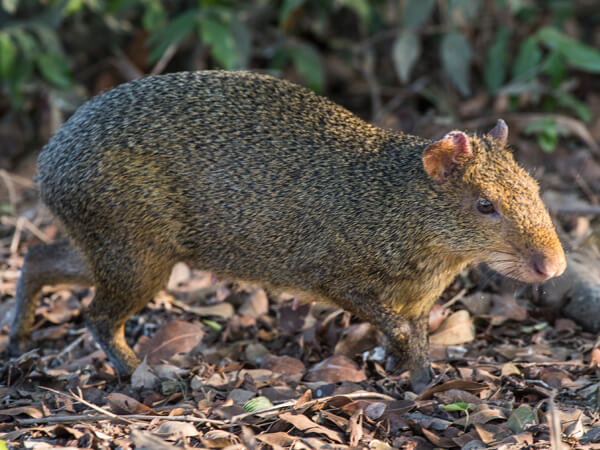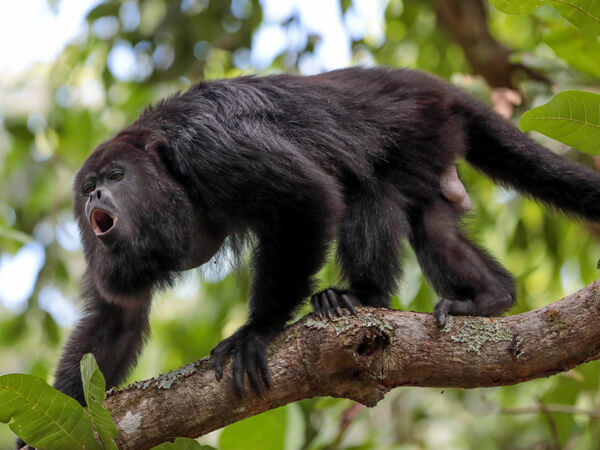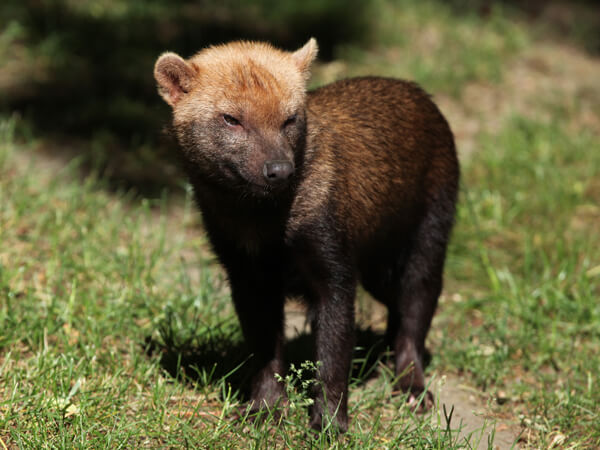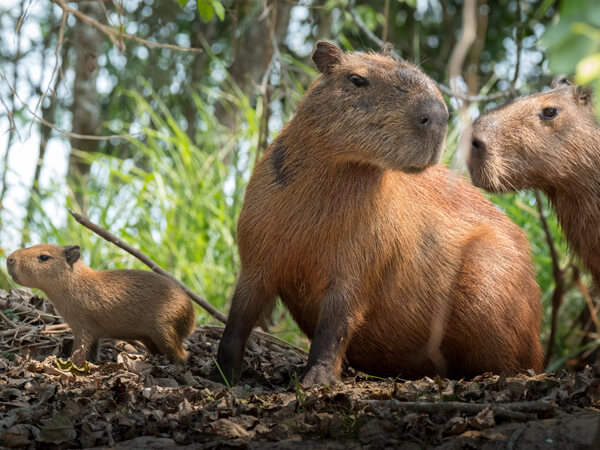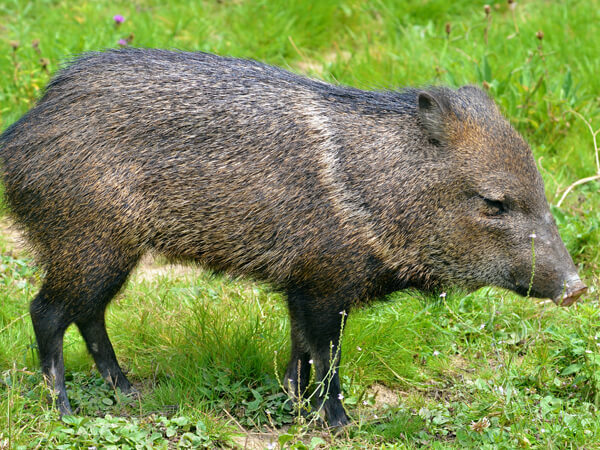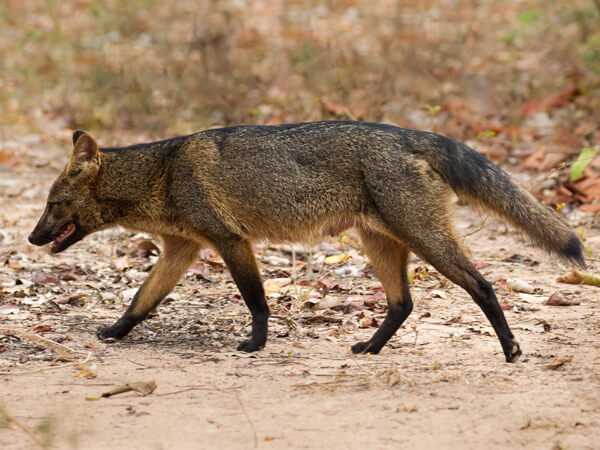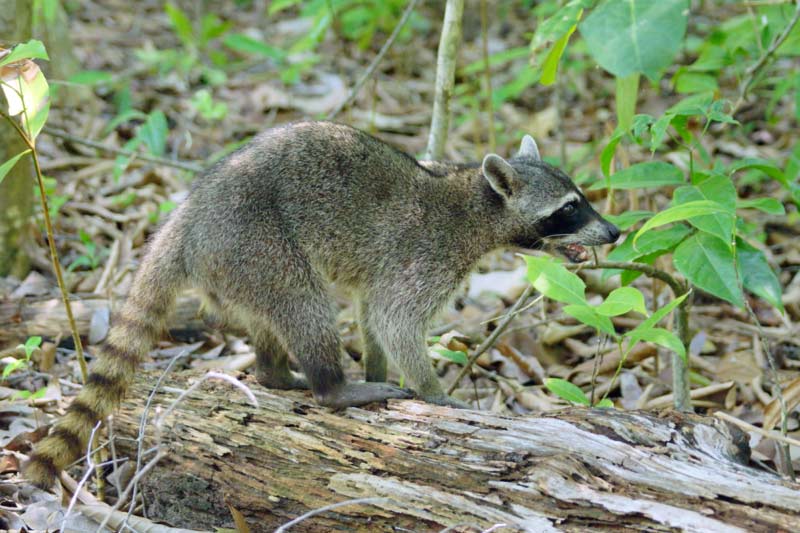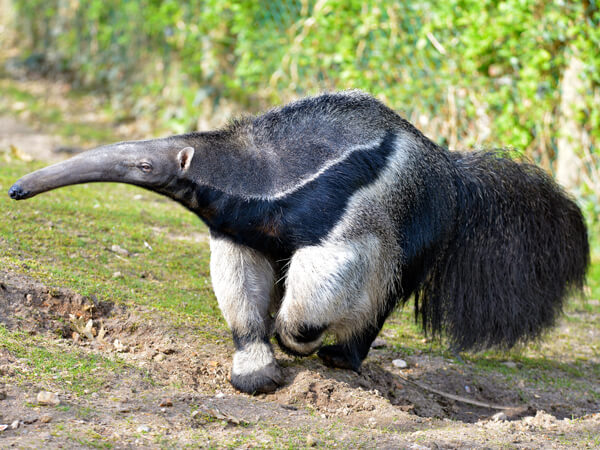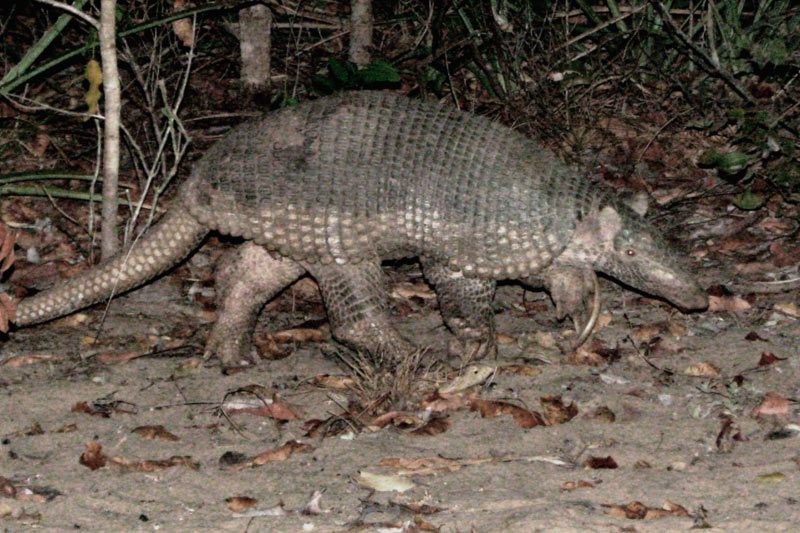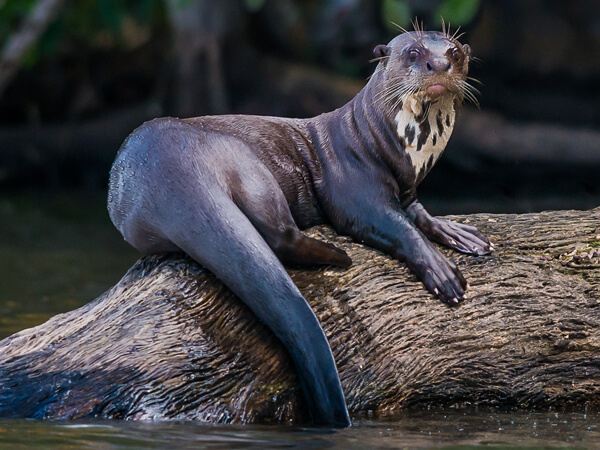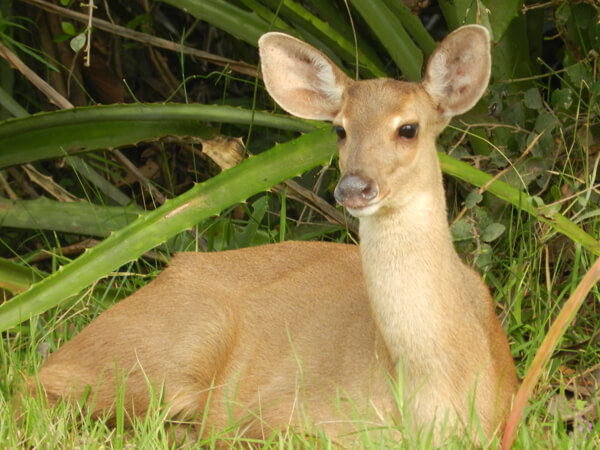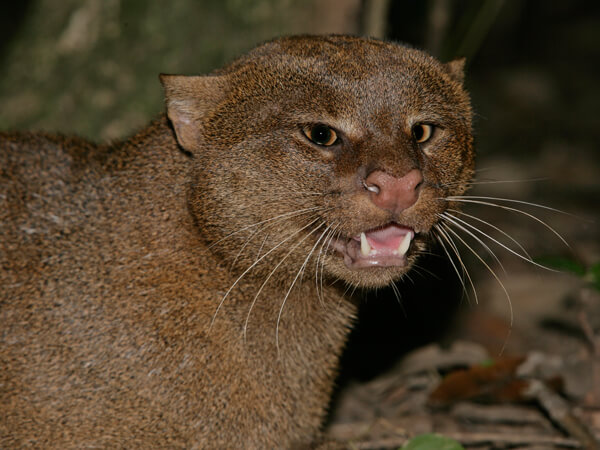Although it looks like an ocelot, the margay is slightly smaller in size. It is found in several Brazilian biomes, but at low population densities.
Click to learn more
Distribution
The species is widely distributed throughout the Americas, from Mexico to northern Argentina and northern Uruguay, and is present in a large part of the Brazilian territory, except in some parts of the northeast. Found in a wide variety of habitats, including rainforests, savannas, scrub and wetlands, the margay appears in all Brazilian biomes, although it prefers forested environments.
Features
The margay measures between 42 and 80 centimeters in length between head and body, with the tail measuring 30 to 51 centimeters, and can weigh up to five kilograms. It has a more rounded head than other felines, with surprisingly big eyes. In relation to its size, the tail is longer than the other wild cats and can be effectively used for balance and to serve as a counterweight when jumping. Their claws are also situated higher, helping them to cling to tree trunks and branches.
Behavior
Margay cats live in forested areas and are great climbers and jumpers. They can jump 2.5 meters vertically with a single impulse. They have very flexible rear ankles, like those of squirrels – and unique among cats – allowing a rotation of up to 180 degrees of these joints, which results in a rare ability to descend from trees upside down. They are solitary and rest in trees during the day.
Food
Their diet consists mainly of arboreal mammals, including skunks, squirrels and arboreal rats, but they also prey on terrestrial mammals such as agoutis, rabbits and cavies, as well as birds, reptiles, amphibians and insects.
Reproduction
Pregnancy varies between 81 and 84 days, with birth given to only one cub. A small litter is a characteristic of arboreal mammals. The offspring weighs between 85 to 125 grams at birth and begins to eat solid foods at seven or eight weeks. They reach sexual maturity around two years of age.
Conservation
Margay cats have been classified as “nearly threatened” by the IUCN, but as “vulnerable” according to the national list of the ICMBio. They were heavily hunted in the 1960s and 1970s for fur trade: it takes 15 animals to make a fur coat. As the species is closely linked to forest habitats, deforestation and habitat, loss is a major threat.


